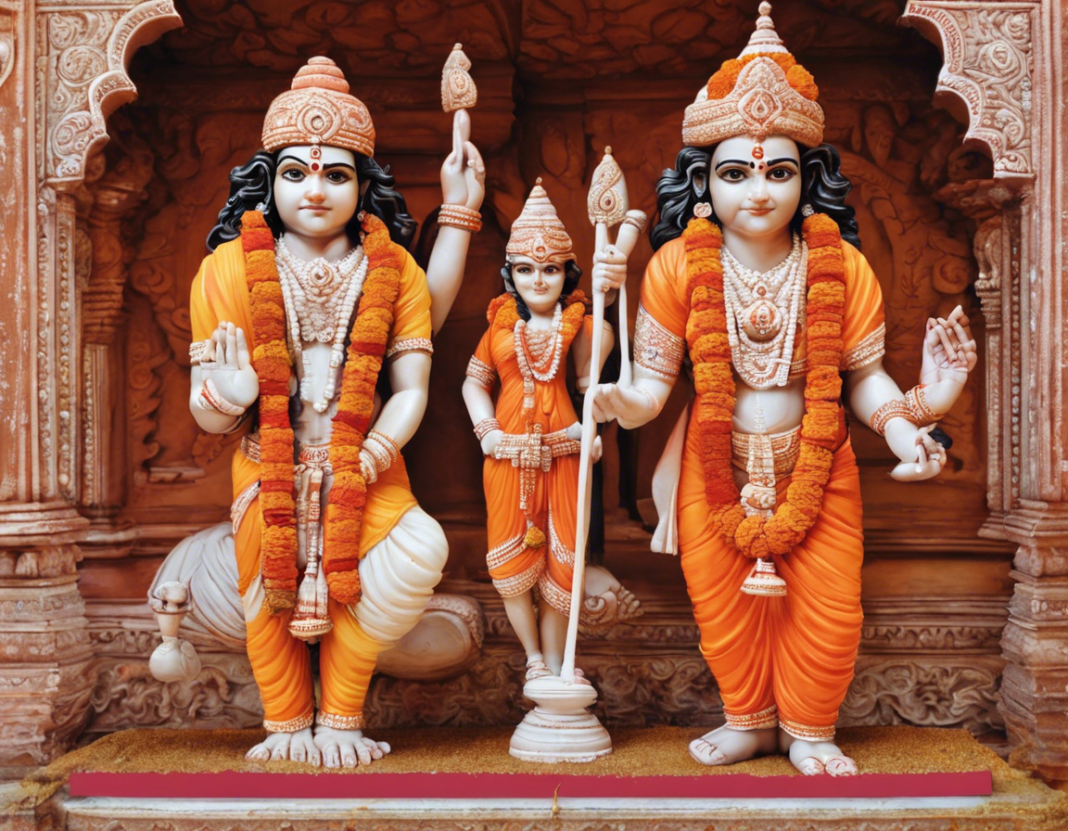India’s rich cultural tapestry is adorned with a myriad of traditions, beliefs, and architectural marvels that stand as testaments to its glorious past. Among these, the Ayodhya Ram Mandir holds a special place in the hearts of millions of Hindus worldwide. The recent unveiling of the Ram Mandir Murti in Ayodhya marks a momentous occasion not just in religious history but also in the cultural resurgence of India.
The Significance of Ayodhya Ram Mandir:
The Ayodhya Ram Mandir stands at the site believed to be the birthplace of Lord Rama, one of the most revered deities in Hinduism. The construction of the temple at this sacred location has been a longstanding desire of Hindus symbolizing their faith and devotion to Lord Rama.
Historical Context and Controversies:
The journey towards the construction of the Ram Mandir has been rife with historical, political, and legal battles. The dispute over the site between Hindu and Muslim communities spanned several decades until a landmark Supreme Court ruling in 2019 paved the way for the construction of the temple.
The unveiling of the Ram Mandir Murti signifies the culmination of this journey, rekindling sentiments of unity, faith, and cultural heritage.
Architectural Marvel and Symbolism:
The design and architecture of the Ayodhya Ram Mandir epitomize India’s rich heritage and architectural prowess. The intricate carvings, majestic domes, and towering spires reflect a blend of traditional Hindu temple architecture with contemporary engineering.
The Ram Mandir Murti, depicting Lord Rama in a grandeur pose, not only serves as an object of worship but also as a symbol of divine grace, peace, and righteousness.
Devotion and Cultural Renaissance:
The unveiling of the Ram Mandir Murti is not just a religious event but a cultural renaissance that echoes the sentiments of millions of devotees who have ardently awaited this moment. It serves as a reminder of the values and principles that Lord Rama embodies – dharma, righteousness, and compassion.
The Ayodhya Ram Mandir and its iconic Ram Mandir Murti stand as beacons of hope, unity, and spiritual awakening in a world that often finds itself torn apart by discord and strife.
The Message of Lord Rama for Modern Times:
The teachings of Lord Rama hold profound relevance even in today’s fast-paced, modern world. His exemplary life, filled with challenges, sacrifices, and unwavering devotion to duty and truth, serves as a guiding light for individuals seeking purpose, integrity, and spiritual fulfillment.
In a world marred by materialism and selfish pursuits, the message of Lord Rama – of humility, compassion, and righteousness – resonates deeply, offering a timeless blueprint for a fulfilling and meaningful life.
Conclusion:
As the majestic Ram Mandir Murti stands tall in Ayodhya, it not only signifies the culmination of a long-cherished dream but also heralds a new era of cultural revival, spiritual awakening, and unity among diverse communities. The essence of Lord Rama’s teachings embodied in the temple serves as a reminder of the eternal values that transcend time and space, inspiring generations to strive for a harmonious existence guided by faith, righteousness, and love.
Frequently Asked Questions (FAQs) about Ayodhya Ram Mandir:
1. What is the significance of the Ayodhya Ram Mandir in Hinduism?
The Ayodhya Ram Mandir is believed to be the birthplace of Lord Rama, one of the most revered deities in Hinduism. It holds immense religious and cultural significance for millions of Hindus worldwide.
2. What led to the construction of the Ram Mandir in Ayodhya?
The construction of the Ram Mandir in Ayodhya followed a long-standing dispute between Hindu and Muslim communities over the site. A landmark Supreme Court ruling in 2019 paved the way for the temple’s construction.
3. How does the Ram Mandir Murti depict Lord Rama?
The Ram Mandir Murti in Ayodhya depicts Lord Rama in a grandeur pose, symbolizing divine grace, peace, and righteousness. It serves as an object of worship and a cultural icon.
4. What message does Lord Rama’s life convey for the modern world?
Lord Rama’s life exemplifies values such as duty, truth, compassion, and humility. His teachings provide a timeless blueprint for leading a fulfilling and purposeful life in today’s world.
5. How does the Ram Mandir in Ayodhya promote unity and cultural heritage?
The construction and unveiling of the Ram Mandir in Ayodhya signify a cultural renaissance and unity among diverse communities. It stands as a symbol of shared heritage, faith, and devotion to Lord Rama.
